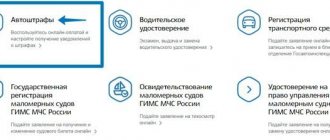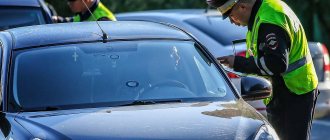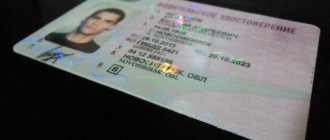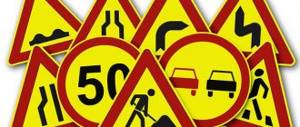The reason for imposing a fine on the driver and collecting funds can be absolutely any non-compliance with traffic rules. All this is noted in the administrative resolution on the offense. This document is usually drawn up by a traffic police inspector when stopping the offending driver.
If the violation of traffic rules was recorded by video surveillance cameras, then the document is sent to the citizen by mail. Deciphering a fine by order number helps you find out why it was sent, exactly how much you need to pay, and exactly how to do it.
Attention! You are given 2.5 months to pay the fine, after which additional measures may be taken.
We find out by the number of the resolution what the fine is
Each administrative resolution has its own unique number. However, from the identifier itself it is impossible to understand for what violation the punishment was imposed. To do this, you will need to use one of the online services and find a solution indicating the article of the Code of Administrative Offenses of the Russian Federation. Despite this, you can still get a lot of useful information from his number.
Search and check traffic police fines by resolution number
The most reliable way to check issued fines is to search on the traffic police website. It is carried out only by the state registration plate of the car and by the number of its registration certificate. A search by UIN for a resolution on an administrative offense is not provided here.
Such a search is carried out using the website for payment of government services and the A3 payment service. The government services website provides the ability to search using the old numbering format.
What information can be extracted from the date and number of the traffic police resolution?
From the number of the traffic police resolution you can find out when the form was issued, which department of the traffic police issued it, as well as in what region.
The date allows you to see when it was issued.
The date of issue is also important information.
After all, some procedural deadlines are counted from it, namely:
- The time for the decision to enter into legal force, which is ten days from the date of receipt of its copy by the driver;
- The period for payment of the penalty is equal to two months from the date the document enters into legal force;
- The grace period for payment of the fine is twenty days from the date of the decision.
What to pay attention to in the resolution
The document contains information about the violator of the rules, by which he can be easily identified. This is the full name, series and number of the passport, the department of the civil service where the latter was issued. The resolution provides information about the offense for which punishment is imposed:
- address of the scene of the incident;
- date and exact time of the violation;
- photo from a place where the license plate number of the car is clearly visible;
- description of the offense;
- the article under which the punishment is imposed;
- the amount of the fine.
The motorist should check all the positions to make sure that the document applies specifically to him and not to another person. There may be confusion and erroneous identification of the symbols of the vehicle registration plate. All this needs to be clarified, especially when the driver does not remember the fact of violating the rules. Or he is sure that at the indicated time he was in a completely different place, and not where it was committed.
Finding out the digital code of the fine decision will help even more. This is a combination of symbols that reflects all the information about a specific violation and the penalty for it.
We recommend reading about the traffic police fine notice. You will learn about the procedure for receiving notification of fines, the government services portal for information without notification, and paying fines. Find out more about how to renew your driver's license here.
How to decrypt?
All drivers who have at least once been subjected to administrative punishment for violating traffic rules know that traffic police regulations have a long number of twenty-one digits. Each number or combination thereof carries information.
Here is an example: 18810164150922883302. It is divided into several blocks as follows: (188)(1)(0)(1)(64)(15)(09)(22)(88330)(2).
Here's what they mean:
| Block | Meaning |
| 188 | The initial digits of the budget classification code, which indicate where the money paid will go |
| 1 | State traffic inspectorate unit code |
| 0 | Classifier of the type of punishment. In this case, a monetary penalty |
| 1 | The number “1” means that this administrative offense was recorded using a camera |
| 64 | Code of the subject of the Russian Federation |
| 15 | Year of printing of the form on which the document was drawn up |
| 09 | Month of printing the form |
| 22 | Form printing day |
| 88330 | Serial number of the form |
| 2 | Check digit of the unique accrual identifier. Separates different types of payments to the budget |
If the decision was made by a magistrate, the number will be much shorter. It consists of only three blocks.
Here is his example: 5-425/2018. And here's what it means:
| Block | Meaning |
| 5 | Case classifier. A five means it's an administrative matter. |
| 425 | Serial number of the case |
| 2018 | Year in which the business was started |
How to decipher the number of the traffic police fine
What is the resolution number? Until 2014, numbering consisted not only of numbers, but also letters. This made the payment procedure very difficult.
Because of this, we switched to the UIN system when paying a fine - a unique accrual identifier. This system is more universal and does not cause difficulties.
In the image below you can see what the appearance of the traffic police department looks like.
The UIN is a sequence of 20 digits. Each of them is called a category and means the following:
- Digit 1-3 displays the code of the chief administrator of state budget revenues. The number of the resolution must begin with the number 188. This is the code assigned by the Ministry of Internal Affairs of the Russian Federation.
- Digit 4 indicates the code of the traffic police department.
- Digit 5 – fee code for administrative penalties.
- Digit 6 – type of document. The value “0” is applied if printed forms were used; “1” - if the violation was recorded by a photo or video camera; “2” - if hardware and software were involved; “3” - if the violation was registered manually by a traffic police inspector; “4” - if the decision was made by the court.
- Digits 7-8 indicate the region code.
- Category 9-10 - indicate the year when it was decided to fine the violator.
- Digits 11-14 indicate the month and day of the decision.
- Category 15-19 is a personal serial number, which is independently given by the traffic police departments. It shouldn't be repeated.
- Digit 20 is the control digit of the UIN.
To make it easier to understand, let's look at an example . The resolution has the number 18820121170502123452. The number can be divided into blocks for ease of perception: 188-2-0-1-21-17-05-02-12345-2.
Each category means the following:
- 188 – payment is sent to the revenues of the Ministry of Internal Affairs of the Russian Federation;
- 2 – code assigned to the traffic police department;
- 0 is an administrative fine;
- 1 – the violation was recorded by a camera;
- 21 – region code, in this case the Chuvash Republic;
- 17 – 2021;
- 05 – month of May;
- 02 – day of the month;
- 12345 – the resolution has this serial number;
- 2 – category UIN.
As a result, it turns out that the violation was committed in Chuvashia on May 2, 2017 and it was recorded by a camera.
As you can see, everything is quite simple. If you know the number of the traffic police fine, it will not be difficult to decipher it .
How to check a fine by resolution number
Decoding of the resolution number can be done for free on the official traffic police portal.
All information of interest can be found by entering the car registration certificate number or its state registration plate into the search engine. Searching by UIN of the decree is not provided.
You can also check the UIN fine on the state payment resource. services _ Here the check is carried out even using the old code format.
If necessary, you can download receipts from these services and pay online. You can also pay through a terminal or bank.
A traffic police fine is issued only in the event of an administrative offense. What exactly the fine was imposed for can be found out by the document number.
At first glance, decoding seems difficult. However, knowing the UIN of the traffic police, you can find out when, where, for what and by whom the monetary penalty was imposed. It is much easier to find out with the help of special online resources.
Error in the decision on an administrative offense
The website of the Legal Social Network 9111.ru collected 54 questions on the topic Error in the decision on an administrative offense. You can use the search in the existing database of questions with answers or ask your own question. Experienced lawyers and attorneys specializing in the topic of Error in a decision on an administrative offense will advise you completely free of charge. You can get advice either by calling hotline 8, open 24 hours a day, or online through the form on the website. There are currently 18 lawyers and advocates online.
Advice from lawyers:
1.1. in your case, unfortunately for you, this error has absolutely no meaning. Direct installation of the RF Armed Forces. Errors in dates, numbers, names, auto judges turn a blind eye to this.
2.1. No is not. What other violations are there? Essentially? Under what article are they being attracted?
3.1. The question is very similar to a task for a student.
4.1. Hello Veronica. As I understand it, you want to appeal the decision itself imposing a fine of 5,000 rubles, right? According to this definition, we can conclude that the Supreme Court paid attention not to the subject of the dispute itself, which is of significant importance, but only to the typo. Moreover, he left the previous definition in force. According to the rules of jurisdiction, you must appeal higher if you think that the fine was issued illegally.
5.1. If you agree with the punishment and the nature of the offense charged against you. It is not necessary to appeal, but you have the right to write an application to correct a technical error.
5.2. You have the right to appeal in any case, but in this case there is a technical error that can be corrected. This will not be a basis for canceling the decision.
What is a resolution and how does it differ from a protocol?
Traffic police officers often forget about their main function and are busy distributing fines, believing that this is precisely their job. At the same time, they take advantage of the legal ignorance of drivers and sometimes make such decisions unreasonably. This will be discussed below, but now let’s look at the documents themselves.
Based on the results of recording a violation of traffic rules, two documents can be drawn up:
- Protocol on administrative violation. This document is a reflection of the incident and does not contain any penalties. The decision to apply or not to apply a punishment is made on the basis of the protocol and other information, including the driver’s testimony, by higher-ranking traffic police officers or the court.
- A decision in a case of an administrative offense is already a decision to find the driver guilty and determine a specific punishment for the offense. Having received this document, the driver must either appeal it within the ten-day period established by law, or pay penalties by transferring the required amount to the specified accounts.
If you received this document, but lost it and now do not know how to pay the penalty amount, you can get a copy of the fine decision from the traffic police. Contact the department with a request and they will give you a duplicate document free of charge.
What should be in the resolution
On our website you can use a convenient payment method using the UIN code.
To do this, it is enough to enter 20 digits so that all other details can be included in the payment order independently. In this case, it is difficult to avoid a fine, but it is possible if it has nothing to do with you. Perhaps the car was stolen, or the fine was sent to the wrong address. A technical error in this procedure cannot be ruled out. In order to figure out when and where the offense was committed, you need to look at the document itself and the decoding of the resolution number.
The traffic police inspector made a mistake in the resolution - will it be invalid?
Is it possible to appeal a decision of a traffic police officer that contains errors?
When recording an administrative offense, traffic police officers draw up a number of procedural documents. Exactly what kind of paperwork will need to be completed depends on the nature of the offense committed. No matter what legal norm the driver flouts, in all cases a violation protocol form is filled out. The result of documentation is the issuance of a resolution, which indicates the imposed penalty and the details for paying the fine. Its copy, on the basis of Article 29.11 of the Code of Administrative Offenses of the Russian Federation, is handed over to the person who has violated the law.
Sometimes the driver notices that there is some inaccuracy in the text. Traffic police inspectors often make mistakes when entering the driver’s personal data into the form. Most often, the motorist's date of birth or complex surname is indicated incorrectly. Will such a resolution be considered invalid? What should I do if I find an error in a document?










